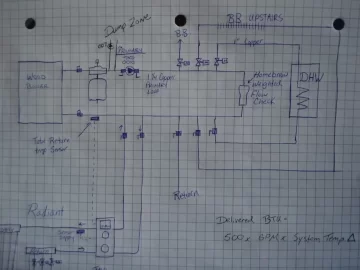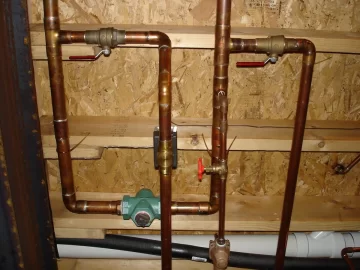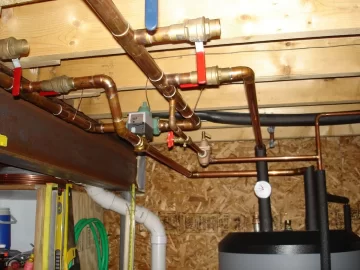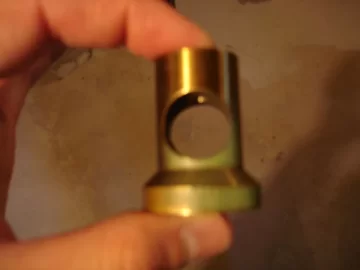Hey guys,
As some my know, I'm buying an Attack DP45. My current setup is primary/secondary with zone valves to control all loads, accept the injection loop for radiant slab, which is closely spaced tees in the primary loop. Under all conditions the return water will never below 155 at worst case with all zones open (which never happens), it is usually in the 160-170 region. I ask because most on here seem to have them. When the boiler is comming up to temp and the primary pump has not yet started and the boiler reaches the preset, there is about 3 gallons of room temp water dumped into the boiler and things begin. Is this a problem for a gasser??? Or is the concern a sustained low return temp causing tarring? I just don't want to cause thermal shock to anything. I have low return temp inherrantly built in through control, but is a Termovar still necessary for this initial slug of cold water? I want to have one ordered in time to get things piped up.
at worst case with all zones open (which never happens), it is usually in the 160-170 region. I ask because most on here seem to have them. When the boiler is comming up to temp and the primary pump has not yet started and the boiler reaches the preset, there is about 3 gallons of room temp water dumped into the boiler and things begin. Is this a problem for a gasser??? Or is the concern a sustained low return temp causing tarring? I just don't want to cause thermal shock to anything. I have low return temp inherrantly built in through control, but is a Termovar still necessary for this initial slug of cold water? I want to have one ordered in time to get things piped up.
Thanks
Taylor
As some my know, I'm buying an Attack DP45. My current setup is primary/secondary with zone valves to control all loads, accept the injection loop for radiant slab, which is closely spaced tees in the primary loop. Under all conditions the return water will never below 155
 at worst case with all zones open (which never happens), it is usually in the 160-170 region. I ask because most on here seem to have them. When the boiler is comming up to temp and the primary pump has not yet started and the boiler reaches the preset, there is about 3 gallons of room temp water dumped into the boiler and things begin. Is this a problem for a gasser??? Or is the concern a sustained low return temp causing tarring? I just don't want to cause thermal shock to anything. I have low return temp inherrantly built in through control, but is a Termovar still necessary for this initial slug of cold water? I want to have one ordered in time to get things piped up.
at worst case with all zones open (which never happens), it is usually in the 160-170 region. I ask because most on here seem to have them. When the boiler is comming up to temp and the primary pump has not yet started and the boiler reaches the preset, there is about 3 gallons of room temp water dumped into the boiler and things begin. Is this a problem for a gasser??? Or is the concern a sustained low return temp causing tarring? I just don't want to cause thermal shock to anything. I have low return temp inherrantly built in through control, but is a Termovar still necessary for this initial slug of cold water? I want to have one ordered in time to get things piped up. Thanks
Taylor


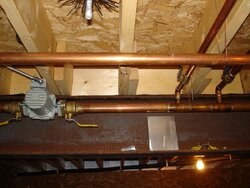
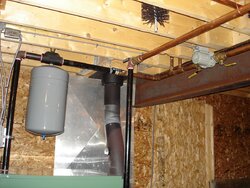
 T of 50
T of 50